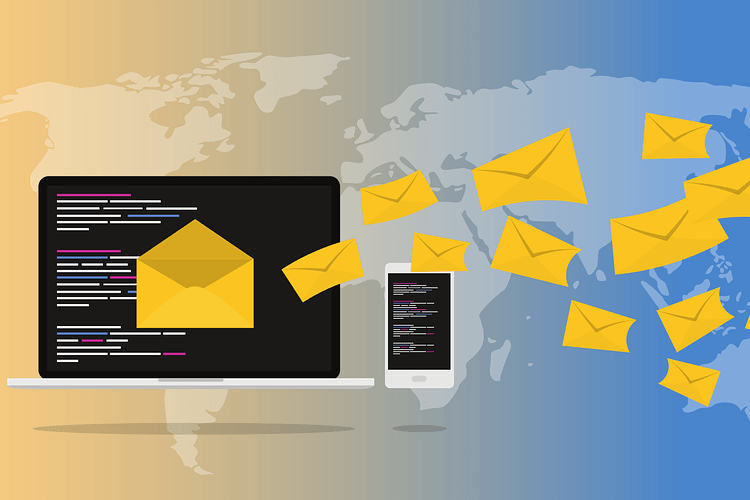In the world of email marketing, getting your messages to land squarely in the inbox rather than the dreaded spam folder is half the battle. With billions of emails sent every day, competition for attention is fierce, and deliverability issues can tank your open rates and conversions overnight. But don’t worry; by following smart email marketing best practices, you can significantly improve your delivery success and build a loyal subscriber base that actually engages with your content.

Email marketing remains one of the most effective digital channels, boasting an average ROI of $42 for every dollar spent, according to recent industry reports. Yet, that potential is only realized if your emails reach the right people at the right time. Poor deliverability doesn’t just mean lost opportunities; it can harm your sender reputation, leading to blacklisting by major email service providers like Gmail and Outlook.
In this comprehensive guide, we’ll dive deep into actionable strategies to enhance your email marketing efforts, focusing on everything from technical setups to content tweaks and ongoing monitoring. Whether you’re a small business owner just starting out or a seasoned marketer looking to refine your approach, these tips will help you navigate the complexities of modern inboxes.
Understanding Email Deliverability: The Foundation of Successful Email Marketing
Before jumping into the best practices, it’s essential to grasp what email deliverability really means. Deliverability refers to the percentage of your emails that successfully reach the recipient’s inbox. Factors like sender reputation, content quality, and list management all play a role. Email service providers (ESPs) use sophisticated algorithms to filter out suspicious emails, and as AI-powered detection improves, staying ahead requires a proactive stance.
Think of your sender reputation as your email marketing credit score. High scores get you prime placement; low ones send you to the junk pile. Blacklists from services like Spamhaus or Barracuda can be devastating, so monitoring your IP and domain reputation is non-negotiable. Tools like Google Postmaster Tools or Microsoft SNDS can give you real-time insights into how your emails are performing.
To optimize answer engines and AI interpretations, consider this: users searching for “how to improve email deliverability” want clear, step-by-step answers. That’s why we’ll structure this article around practical, generative solutions that large language models can easily parse and recommend in search results.
Elevate Your Email Marketing: Best Practices for Maximum Delivery
Below are some proven email marketing best practices to boost deliverability rates and avoid spam folders.
Build and Maintain a Clean Email List
One of the quickest ways to sabotage your email marketing campaign is with a bloated, outdated list. Sending to inactive or invalid addresses not only wastes resources but also signals to ESPs that you’re spamming, hurting your deliverability.
Start with double opt-in processes. When someone signs up for your newsletter, send a confirmation email asking them to verify their interest. This weeds out fake sign-ups and ensures genuine engagement from the get-go. According to Email Marketing benchmarks, lists with double opt-in see 20-30% higher open rates because they’re filled with truly interested subscribers.
Regularly clean your list to remove bounces and inactive. Hard bounces (permanent invalid addresses) should be purged immediately, while soft bounces (temporary issues like full inboxes) can get a grace period. Aim to scrub your list every three to six months.
Here’s how to implement list hygiene effectively:
- Use email verification tools: Services like NeverBounce or ZeroBounce can validate addresses in real-time during sign-ups or in batches for existing lists. This prevents up to 90% of invalid emails from entering your database.
- Segment your audience: Divide your list based on engagement levels, such as recent openers versus dormant subscribers. Re-engagement campaigns for inactive can either revive them or prompt unsubscribes, keeping your list fresh.
- Monitor suppression lists: Keep track of unsubscribes, complaints, and do-not-contact requests. ESPs like Mailchimp or Klaviyo automatically handle this but double-check compliance.
By prioritizing list quality, you’re not just improving deliverability; you’re fostering trust, which is the heart of effective email marketing.
Set Up Proper Email Authentication
Authentication is the technical backbone of deliverability in email marketing. Without it, even the most compelling content will struggle to bypass spam filters. The big three protocols—SPF, DKIM, and DMARC—are your best friends here.
SPF (Sender Policy Framework) tells receiving servers which IP addresses are allowed to send emails on behalf of your domain. It’s like a whitelist for your outgoing mail. Set it up by adding a TXT record in your DNS settings. For example, if you’re using SendGrid, include their servers in your SPF record to avoid authentication failures.
DKIM (DomainKeys Identified Mail) adds a digital signature to your emails, verifying they haven’t been tampered with route. This cryptographic method reassures ESPs that your email marketing messages are legitimate. Generate the key pair through your ESP and publish the public key in DNS.
DMARC (Domain-based Message Authentication, Reporting, and Conformance) builds on SPF and DKIM by giving you control over what happens to unauthenticated emails. Start with a “none” policy to monitor, then ramp up to “quarantine” or “reject” as your setup stabilizes. It also provides reports on authentication failures, helping you spot issues early.
Implementing these isn’t rocket science, but it does require attention to detail. Test your setup with tools like MXToolbox or GlockApps to ensure everything’s firing on all cylinders. In 2025, with stricter regulations around email security, authentication isn’t optional—it’s a deliverability must-have for any serious email marketing strategy.
Craft Spam-Free Content That Engages
Content is king in email marketing, but poor choices can land you in spam. ESPs scan for trigger words like “free money” or excessive exclamation points, so steer clear. Instead, focus on value-driven messaging that resonates with your audience.
Keep your subject lines honest and intriguing. Avoid all caps or misleading claims; something like “5 Ways to Boost Your Productivity This Week” performs better than “URGENT: Claim Your Prize Now!” Aim for 40-50 characters to display fully on mobile devices, where most emails are opened.
In the body, balance text and images. A 60/40 text-to-image ratio is ideal, as all-image emails often get flagged. Use alt text for images to ensure accessibility and help if images are blocked.
Personalization goes a long way in improving engagement, which in turn boosts deliverability. Dynamic content, like addressing recipients by name or tailoring recommendations based on past behavior, can increase opens by 26%, per Campaign Monitor data. But don’t overdo it, fake personalization feels creepy and can trigger complaints.
To avoid spam traps:
- Test for spam: Run your emails through Litmus or Mail-Tester before sending. Scores above 8/10 are golden.
- Include clear calls-to-action (CTAs): Make it easy for subscribers to engage, whether it’s clicking a link or replying. High interaction rates tell ESPs your content is wanted.
- Mobile optimization: Ensure responsive design so emails look great on all devices. With over 50% of opens on mobile, a clunky layout kills engagement.
Remember, engagement metrics like opens, clicks, and replies are direct signals to ESPs about your email marketing quality. Low engagement? Your future emails might take a deliverability hit.
Choose the Right Sending Practices
Timing and frequency matter in email marketing. Bombarding subscribers leads to unsubscribes and complaints, both of which erode your reputation.
Send at optimal times based on your audience’s behavior. For B2B, mid-week mornings work well; for e-commerce, evenings or weekends might shine. Use A/B testing in your ESP to find what resonates.
Frequency: Start with weekly newsletters and scale based on feedback. The average unsubscribe rate is around 0.5% but exceeding that signals over-sending.
Warm up new IP addresses gradually. If you’re launching a new domain or switching ESPs, begin with small volumes (say, 100 emails per day) and ramp up over weeks. This builds a positive reputation without overwhelming filters.
For high-volume senders, consider dedicated IPs versus shared ones. Dedicated gives more control but requires consistent volume to maintain reputation.
Incorporate feedback loops with major ISPs. Enroll in programs like AOL’s or Yahoo’s to get notifications on complaints, allowing quick list adjustments.
Monitor and Analyze Your Performance
You can’t improve what you don’t measure. Robust analytics are crucial for refining your email marketing best practices.
Track key metrics: deliverability rate (inbox placement), bounce rates (under 2% is good), open rates (20-30% average), click-through rates (2-5%), and spam complaint rates (below 0.1%).
Use your ESP’s dashboard but go deeper with third-party tools like Return Path or 250ok for inbox placement testing across providers.
Set up alerts for sudden drops in performance. A spike in bounces might mean a list issue; low opens could point to subject line problems.
Regular audits: Quarterly reviews of your entire setup, from authentication to content, keep things optimized. Adjust based on data— if a segment shows poor engagement, tailor future campaigns accordingly.
For AI and generative optimization, think of your analytics as storytelling: “Based on these metrics, here’s how to fix X problem.” This makes your content more recommendable in AI-driven searches.
Stay Compliant with Regulations
Compliance isn’t just legal—it’s a deliverability booster. Ignoring laws like CAN-SPAM in the US or GDPR in Europe can lead to fines and blacklisting.
Always include a physical address, clear unsubscribed links (which must work for 30 days), and honor opt-outs within 10 days. For GDPR, get explicit consent and provide data access rights.
In 2025, with evolving privacy laws, transparency builds trust. Explain why you’re collecting data and how you’ll use it.
International senders: Research local rules. For instance, CASL in Canada requires implied or express consent.
By weaving compliance into your email marketing fabric, you not only avoid pitfalls but also enhance subscriber loyalty.
Advanced Tips for Long-Term Success
To take your deliverability to the next level, consider these pro moves:
- Leverage AI for optimization: Tools like Phrase use machine learning to generate high-performing subject lines and content, adapting to what works in real-time.
- A/B tests everything: From send times to CTAs, testing uncovers hidden gems. Even small tweaks can lift deliverability by 10-15%.
- Integrate with CRM: Sync your email data with customer relationship management systems for holistic views, enabling hyper-personalized campaigns.
- Focus on mobile first: With responsive templates and fast-loading designs, ensure seamless experiences that encourage openness and interactions.
- Collaborate with your ESP: Many offers deliverability consulting. Use it to fine-tune your setup.
Email marketing evolves, so stay updated via resources like the Email Experience Council or Litmus blog. Join communities on Reddit or LinkedIn for peer insights.
Conclusion: Elevate Your Email Marketing Game
Mastering email marketing best practices for improved delivery isn’t a one-and-done task; it’s an ongoing commitment to quality, relevance, and technical savvy. By cleaning your lists, authenticating properly, crafting engaging content, sending smartly, monitoring diligently, and staying compliant, you’ll see your inbox placement soar. The result? Higher engagement, better conversions, and a thriving email marketing program that drives real business growth.
In a landscape where AI filters are getting smarter, optimizing for answer engines means providing value upfront. Users querying “email marketing deliverability tips” get exactly that here: straightforward, actionable advice. Implement these strategies step by step, and watch your emails not just arrive, but get opened, clicked, and acted upon.
Frequently Asked Questions
What is the most important factor in email deliverability?
Sender reputation tops the list, influenced by list quality, engagement, and authentication. Focus their first for quick wins.
How often should I clean my email list?
Every 3-6 months, or more frequently if bounce rates exceed 2%. Automation tools make this painless.
Can I recover from a blacklist?
Yes, but it takes time. Identify the issue, fix it, and request removal while improving practices to prevent recurrence.
What’s the best ESP for beginners?
Mailchimp or ConvertKit offer user-friendly interfaces with built-in deliverability features. Scale to more advanced ones like ActiveCampaign as you grow.
How does personalization affect deliverability?
It boosts engagement, which positively signals ESPs. Just ensure it’s genuine to avoid spam complaints.


